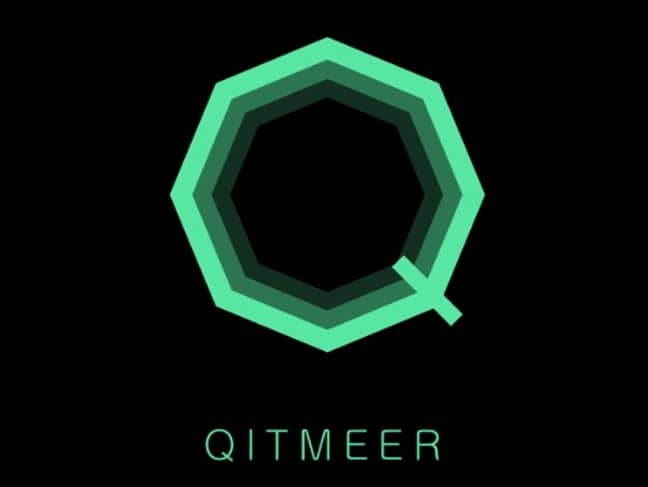Subscribe to wiki
Share wiki
Bookmark
Qitmeer Network
The Agent Tokenization Platform (ATP):Build autonomous agents with the Agent Development Kit (ADK)
Qitmeer Network
Qitmeer Network (founded in November 2017) is a high-performance public blockchain based on the MeerDAG consensus protocol. Its primary objective is to offer secure and dependable services catering to distributed applications and the financial ecosystem. [1][2]
Overview
Co-founded by Abdullah Han[11], the Qitmeer Network operates on a Layer1 + Layer2 architecture, utilizing the BlockDAG consensus protocol as its underlying mechanism. This approach facilitates the execution of smart contracts and interconnects the entire blockchain ecosystem through a cross-chain container layer. [3]
By maximizing BlockDAG's transaction concurrency and ensuring network scalability, Qitmeer establishes an independent environment for smart contracts and accommodates additional containers. This integration is an efficient scaling solution, effectively addressing the blockchain impossible triangle problem by balancing security, decentralization, high performance, and scalability. [3]
In July 2023, Qitmeer formed a strategic partnership with YachtingVerse to reshape the future of yachting experiences by harnessing the power of blockchain technology. [10]
Technology
MeerDAG Consensus Protocol
MeerDAG is a graph-based ledger consensus protocol founded on subsets of blue blocks, amalgamating the strengths of SPECTRE and GHOSTDAG protocols. It achieves asynchronous accounting and establishes ledger chronology through innovative collaboration models and topological principles. Balancing network security, it ensures the capability for high-concurrency transactions, laying the groundwork for scalability. [3][7]
MeerEVM
MeerEVM is a core component of the cross-chain HUB within the QNG Network, functioning as a pluggable smart contract execution engine driven by the MeerDAG consensus protocol. It fosters scalability and cross-chain interoperability within the Qitmeer Network, facilitating the integrated development of the blockchain ecosystem. [7]
Meerlink Protocol
The Meerlink Protocol is an L1 cross-chain interaction protocol dedicated to network relay cross-chain data flows, ensuring synchronized consensus of network data. It ensures the synchronized flow of data for contract transactions across different networks, achieving a 1:1 atomic swap of Meer Coin assets between UTXO models and account models in different network states. [7]
Layer1: Meer Network
Meer Network, a fundamental infrastructure of Qitmeer Network, is built on the MeerDAG consensus protocol and the UTXO (Unspent Transaction Output) data model to create a PoW (Proof of Work) public blockchain. It enables parallel transaction processing and rapid confirmations while maintaining network decentralization and stability. Considered the "core engine" of Qitmeer Network, it provides the incentive for continuous development and innovation. [4]
Cross-Chain Hub: QNG Network
The QNG Network serves as a cross-chain hub that bridges different networks on the Qitmeer Network. It integrates the MeerDAG consensus protocol and is compatible with the smart contract ecosystem, aiming to offer better performance, security, and broader scalability in network infrastructure. [5]
Layer2: High-Speed Subnetwork
The Layer 2 of Qitmeer Network is a robust ecosystem expansion network composed of multiple high-speed subnetworks. This layer is set to enhance the performance, scalability, and privacy features of decentralized networks, offering support for various application scenarios. [6]
Qitmeer Network Utility
Decentralized Finance (DeFi)
The Qitmeer Network leverages the high throughput capability of the MeerDAG consensus protocol to provide robust security support for the efficient functioning of the DeFi ecosystem. Its compatibility with smart contracts and low transaction costs facilitate the cost-effective migration of decentralized financial applications. [8]
This capability enables the development of decentralized trading platforms, lending protocols, stablecoins, and other financial services on the network, contributing to the growth and expansion of decentralized finance initiatives. [8]
GameFi
Qitmeer Network is utilized in the gaming sphere to create and manage digital assets, NFTs, and in-game economies. Its efficient transaction confirmation mechanism enables smoother and more secure operations of virtual economies in games, enhancing the participation experience for game developers and players. [8]
SocialFi
Qitmeer Network supports decentralized applications on social platforms, fostering value exchange among users. Through blockchain technology, it provides a more transparent and secure social experience while granting users greater control over their data. [8]
AIGC
Qitmeer Network offers an infrastructure for the convergence of artificial intelligence and blockchain. This includes applications in data sharing, model training, smart contract execution, etc., supporting the development of secure and trustworthy AI applications. [8]
Clean Energy Mining
Supporting clean energy mining, Qitmeer Network provides a more environmentally friendly and sustainable solution for the mining industry through its efficient consensus protocol and energy-efficient design. This aids in steering the blockchain industry towards a more sustainable direction. [8]
Metaverse Ecosystem
Qitmeer Network serves as an underlying infrastructure for the metaverse, supporting transactions of digital assets and virtual land within the metaverse. It aims to be an ideal choice for constructing the metaverse ecosystem, fostering the convergence of virtual and real-world environments. [8]
MEER Coin
Meer Coin (MEER) is the core asset of the Qitmeer Network, with a total supply of 210.24 Million. Similar to BTC in the Bitcoin Chain, Meer Coin plays a pivotal role as governance and the primary asset for applications within the Qitmeer Network. [9]
It functions as the base currency of the economic system, possessing various functionalities such as value storage and transfer, micropayments, and smart contract fees. The intrinsic value of Meer Coin arises from its utility within the network. [9]
Distribution
The total supply of Meer Coin is 210.24 Million. Block rewards generated through the PoW mechanism lead to a continuously decreasing annual inflation rate until it reaches 0%. Among these coins, 76% of Meer is generated through fair mining, eliminating pre-mining and private sales, ensuring equitable distribution. The remaining 20% is allocated to early supporters participating in the 18-month Medina testnet phase. The final 4% is allocated to the development team for network development. [9]
See something wrong?
The Agent Tokenization Platform (ATP):Build autonomous agents with the Agent Development Kit (ADK)
